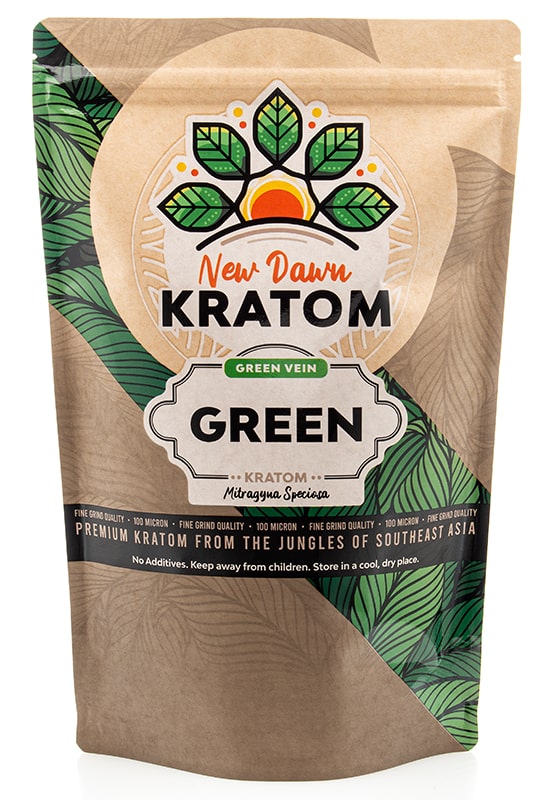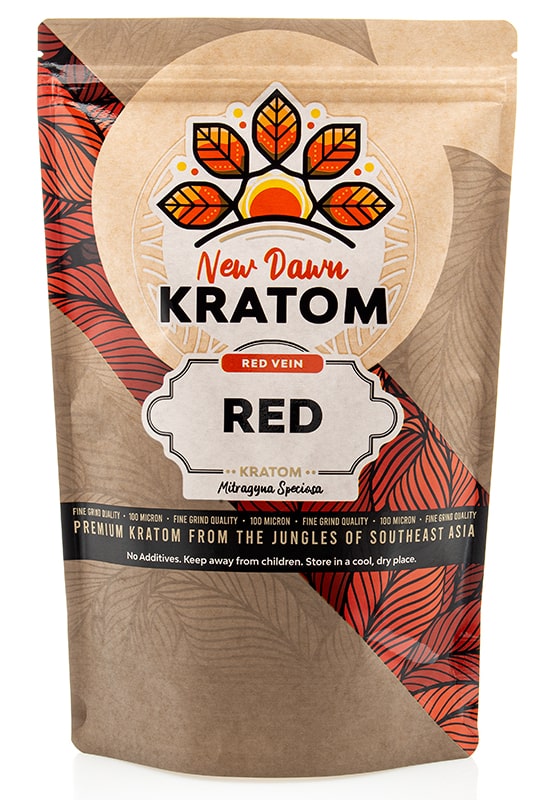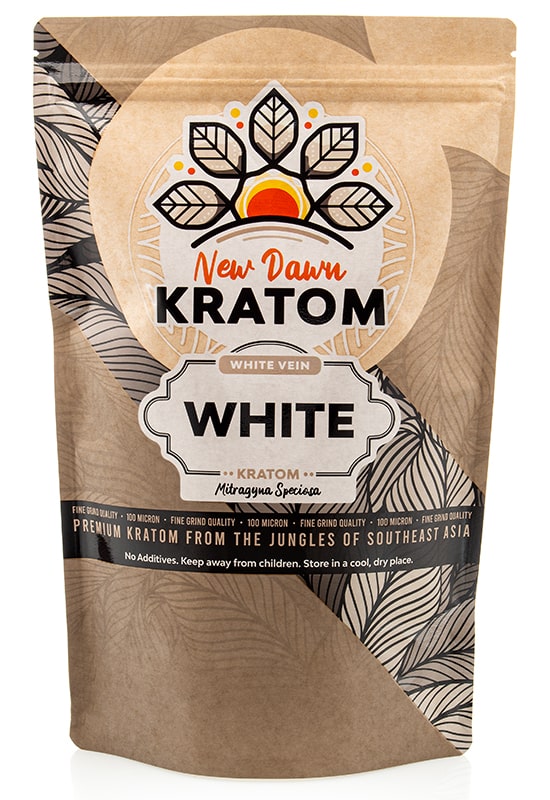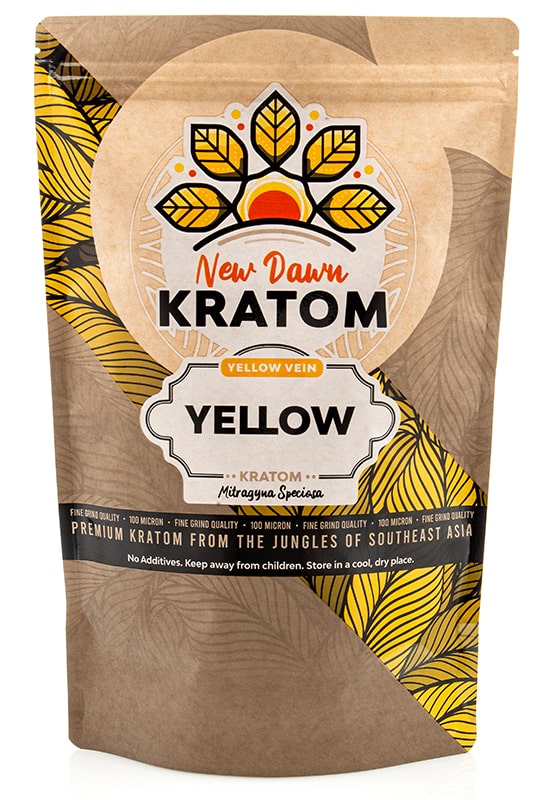In the kratom industry, you’ll find white, green, and red kratom strains labeled as white vein, green vein, and red vein, respectively. So most buyers assume kratom strains get their colors from the original vein color. But this is not always the case.
Kratom strain colors might come about from the drying process. That Green Borneo strain that’s probably your favorite kratom strain right now did not grow as a green vein plant. Chances are it was a red vein and processed into a green strain through a drying process. Thus, the originating vein color doesn’t mean as much. It all boils down to the manufacturer and their techniques of drying kratom leaves into whatever powder color.
What Is Brown Kratom?
Most kratom leaves have red veins. But the final kratom strain color comes from the oxidation process, not necessarily the vein pigments. And this occurs during the manufacturer’s drying process.
- Green vein kratom leaves dry in an air-conditioned room with little to no light. Farmers move them outside for about an hour to complete the drying process.
- White vein kratom leaves dry exclusively indoors. The drying process takes longer compared to green kratom. There’s no use of light.
- Red vein kratom leaves are subject to an outdoor drying process or using UV lights. But when exposed to prolonged outdoor sunlight or UV light, red kratom leaves turn to brownish color in a process known as oxidation.
The red kratom leaves dried outdoors are spread out into thin layers and exposed to the elements for one to three days. The essence of drying is to create a sedating profile. Sunlight also destroys mold and mildew spores in freshly harvested kratom leaves.
Another reason for the drying process is to remove moisture from the leaves. When in such a desiccated state, kratom leaves are ready for crushing into a refined consistency based on the wanted granularity.
What is Oxidation?
Oxidation is an enzymatic reaction behind kratom’s brown color after harvest. Prolonged sunlight exposure breaks down the leaves’ cell walls. This disintegration exposes the polyphenol oxidase to atmospheric oxygen.
What follows is a reaction involving the proteins in the kratom leaves and the oxygen in the air. If left unchecked, oxidation will lead to full deterioration of kratom leaves, resulting in dark kratom powder color.
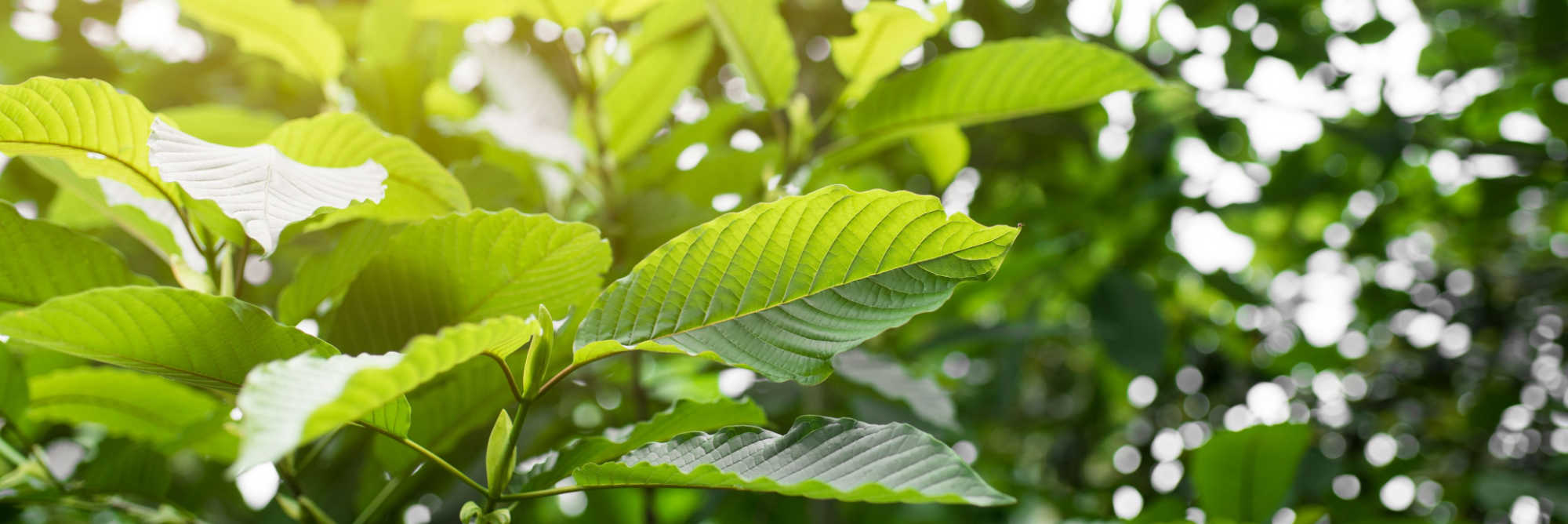
Reduced Alkaloid Levels
Kratom produces a wide range of psychoactive compounds. Of the many alkaloids produced by kratom leaves, mitragynine and 7-hydroxy mitragynine (7-OH) account for most of the kratom’s beneficial effects.
Mitragynine boasts stimulating properties and can make up 38.7 percent of commercial kratom products. Boasting sedating properties, 7-hydroxy mitragynine is a minor constituent found in levels of up to 2 percent in commercial kratom products.
Exposure to the elements during the drying process causes the oxidation of mitragynine alkaloids. Remember, the more mitragynine oxidizes, the higher the production of 7-hydroxy mitragynine. In the end, the amount of mitragynine reduces while the 7-hydroxy mitragynine increases.
Sedating Profile
Oxidation pretty much guarantees a darker brown kratom color and sedating alkaloid profile. Most kratom processors sun-dry their kratom leaves. So kratom leaves that are brown-colored with a sedating profile fall under red kratom. Vendors sell this brownish powder as red vein and most of it is of low quality with lower mitragynine.
From a quality perspective, most people complain about brown kratom being weaker or less stimulating. You’re most likely used to taking just a small dose of red kratom and experiencing stimulant effects. But for brown kratom, lower doses won’t do much to improve your energy, lift your mood, or induce feelings of happiness. This is because, as red kratom leaves oxidize, the stimulating mitragynine alkaloids degrade.
But if you’re looking for relaxation or sedation, a higher dose of dark brown kratom works great. Users mention feeling sleepy and unmotivated. This is because oxidation produces more sedating alkaloids. Users also mention no signs of nausea or jitters after taking higher doses. Simply put, you won’t feel any unwanted side effects with an overdose of brown kratom.

Choosing Red Kratom Strains
Red kratom strains are synonymous with more sedating and relaxing effects in higher doses. At lower doses, some red varieties produce mild stimulant effects. These effects stem from their high concentration of alkaloids.
As mentioned, red kratom leaves are subject to an outdoor drying process. Thus, the duration the kratom leaves spend in outdoor conditions will determine the color and strength of the resulting crushed powder.
You may find some red kratom strains with reddish-brown color or even darker brown color. These are oxidized batches whose final color and alkaloid content have been affected negatively by prolonged exposure to sunlight. The dark or reddish-brown powder color is a sign of lower mitragynine levels and thus weaker stimulating effects.
Ideally, look for red kratom strains with a hint of red. This is a sign of high alkaloid concentration. At lower doses, red kratom powder will produce energy-type effects. And at higher doses, it will produce more sedating effects and feelings of well-being.
The Bottom Line
Kratom strains come in white vein, green vein, and red vein labels. But don’t think that the initial vein color determines the final kratom powder. The post-harvest drying techniques will determine kratom’s color and related alkaloid profile. For red kratom strains dried outdoors, a prolonged oxidation process may change the color of the red variety to brown.
A reddish color is a sure sign of high alkaloid concentration in your kratom powder. In contrast, a brown kratom coloring denotes the degradation of mitragynine, leading to purportedly “weaker” kratom effects compared to green and white kratom. Brown kratom is more sedating and less stimulating. Ultimately, it boils down to what you want out of kratom.


